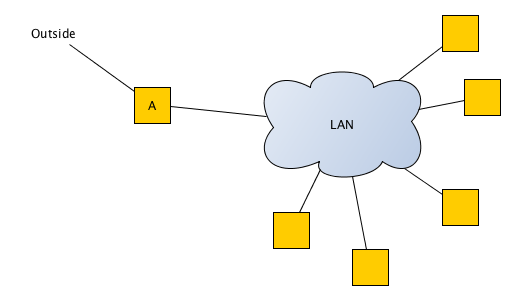ARP
Hi it’s the address resolution protocol!
Unit Goals
To understand the need for a link layer protocol and to examine the extremely popular ARP in some detail.
What ARP Is
So... an IP address is not a hardware address. A MAC address is. ARP is a protocol for mapping between them.
How ARP Works
Here’s the idea:

- An IP packet destined for 157.242.71.101 arrives at host A from the outside.
- Host A broadcasts the message “Which one of you is 157.242.71.101?”
- The correct host unicasts back to A the message “I am, and my hardware address is ___.”
- Host A unicasts the IP packet to the right host.
Hosts SHOULD maintain an ARP cache so that every IP datagram that comes is does not require the whole APR exchange thing to take place.
ARP Message Format
The ARP message is embedded inside a frame. ARP messages look like this:
| 0 | Hardware address type | -- 1 for Ethernet |
| 2 | Protocol address type | -- 1024 for IP |
| 4 | Number of octets in hardware address | -- 6 for Ethernet |
| 5 | Number of octets in protocol address | -- 4 for IPv4 |
| 6 | Operation | -- 1 for ARP Request, 2 for ARP Reply |
| 8 | Sender Hardware Address | |
| Sender Protocol Address | ||
| Target Hardware Address | ||
| Target Protocol Address |
Exercise: An IPv4 packet arrives at an Ethernet network’s router (MAC address 22:11:AB:C2:20:09). The packet is from 233.0.0.22 and is destined for 12.3.255.11 (MAC DB:C4:32:11:99:0B). Show the contents of the ARP request message broadcast from the router.
In the event that the local network uses Ethernet, here’s how the ARP message would be embedded inside the Ethernet frame:
| Preamble | Dest | Src | 0806 | ARP Message | CRC |
|---|
Summary
We’ve covered:
- What ARP is
- How ARP works
- How ARP messages are embedded in an Ethernet frame.